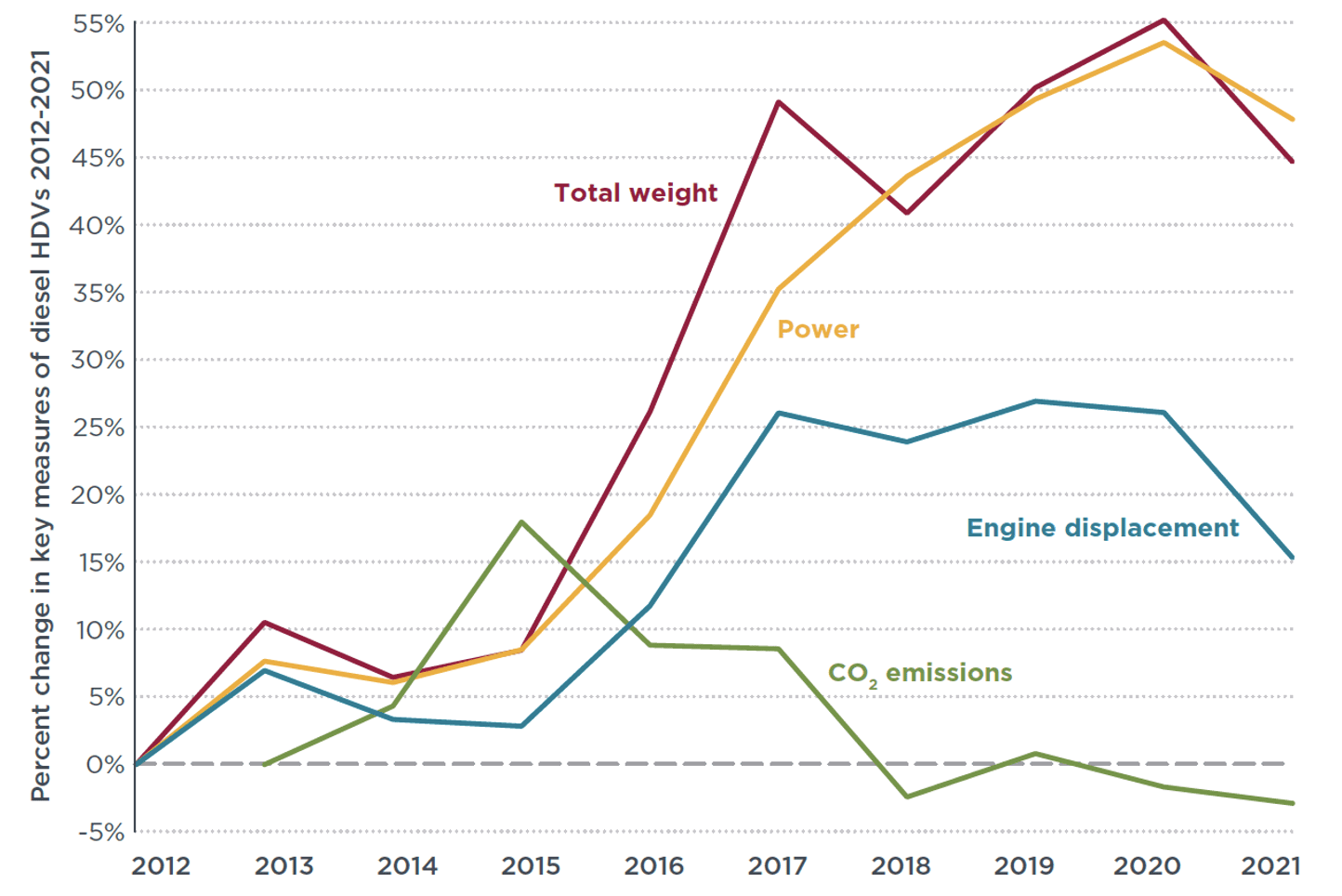Stage 3 China fuel consumption standard for commercial heavy-duty vehicles
Working Paper
The evolution of heavy-duty vehicles in China: A retrospective evaluation of CO2 and pollutant emissions from 2012 to 2021
This study evaluates the effectiveness of policies in curtailing emissions from heavy-duty vehicles over the 2012-2021 period and lays a foundation for developing future regulations for direct control of CO2. The analysis explores the development of heavy-duty vehicles from the perspective of key attributes (curb weight, engine power, and others), fuel consumption/CO2 emissions for various HDV segments, and NOX emissions from tailpipes. (Figure 1.) It focuses on six vehicle segments: city buses, coaches, dump trucks, medium straight trucks, heavy straight trucks, and tractor trailers.

Figure 1. Percent change in key measures of diesel HDVs, 2012-2021
The findings in this study yield several policy recommendations:
- Utility vehicles, which accounted for about 10% of the total market share in 2021, should be fully included in the next stage of fuel consumption standards. Currently they are not.
- A more inclusive and integrated emission control regulation for both pollutant and GHG emissions should be enacted to guide development of heavy-duty vehicles. Currently, China does not directly control GHG emissions at the engine or vehicle level. A switch from the current fuel consumption standard to regulation of GHG emissions will cover more greenhouse gases such as N2O, CH4, etc. In addition, a complete GHG emission standard will allow the HDV industry to balance control of pollutants and GHG emissions under various technology combinations. Applying complete GHG emission regulations on HDVs would also help lay a solid foundation for future work on carbon trading and climate protection.
- Electrification is key to decarbonizing road transport, although clean diesel engine technologies should still be encouraged. We encourage further development of clean diesel engine technologies as a strategy for making the transition to full electrification smoother and more affordable. In addition, just as China applied a dual-credit policy to promote production of electric passenger vehicles, we recommend that the upcoming credit policy on HDVs also highlight the effort to improve engine fuel efficiency and performance.
